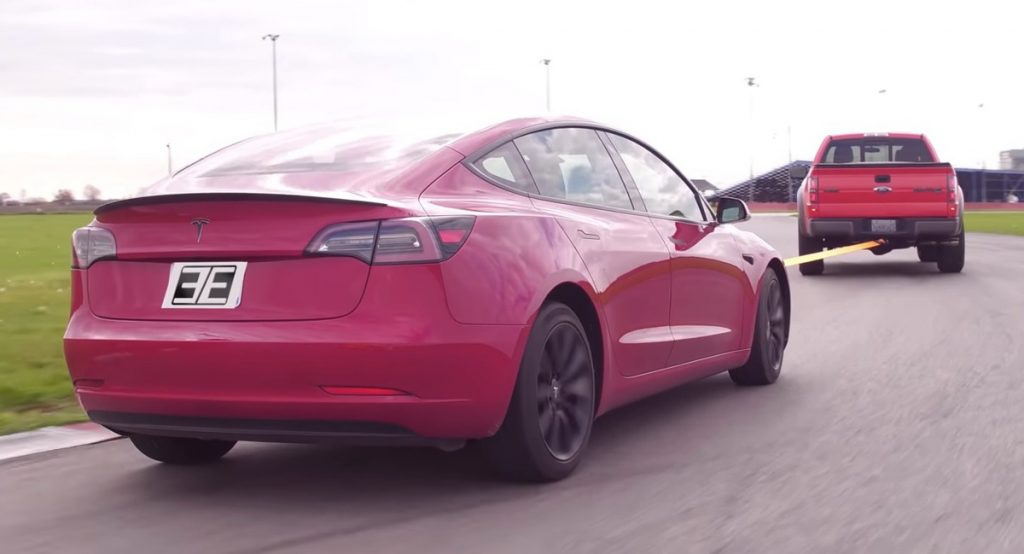Towing a Tesla Model 3 can bring out some really interesting results about its ability to recharge its battery via regenerative braking, especially when a first-gen Ford F-150 Raptor is doing all the lifting.
Engineering Explained performed this experiment in order to find out not only how much charge you can put back into the Tesla’s battery but also to see just how efficient it is against a very thirsty pickup truck like the Ford Raptor.
According to Jason Fenske’s calculations, if both the Tesla Model 3 has an empty battery and the Ford Raptor has an empty fuel tank and you got just one gallon of fuel, you will cover more distance by using the Raptor to tow -and at the same time charge- the Model 3 and then drive the EV till it’s empty again than you would if you just drove the Raptor.
Related: JustICE Served – German Police Carry Away Ford F-150 Blocking EV Charger
This fun experiment, which took place in the controlled environment of Toronto Motorsports Park, started as a test of the Tesla Model 3’s regenerative braking while coasting, which turned out pretty effective.
Of course there’s no comparison between the two vehicles in terms of energy efficiency, but this test also highlights the role of things like weight and aerodynamics. The Raptor is basically a brick on big wheels, while the Model 3 is lighter and glides through the air with much more ease.
There’s a lot of math involved in the following video, but it’s easy to understand and answers a question no one dared to ask yet.




